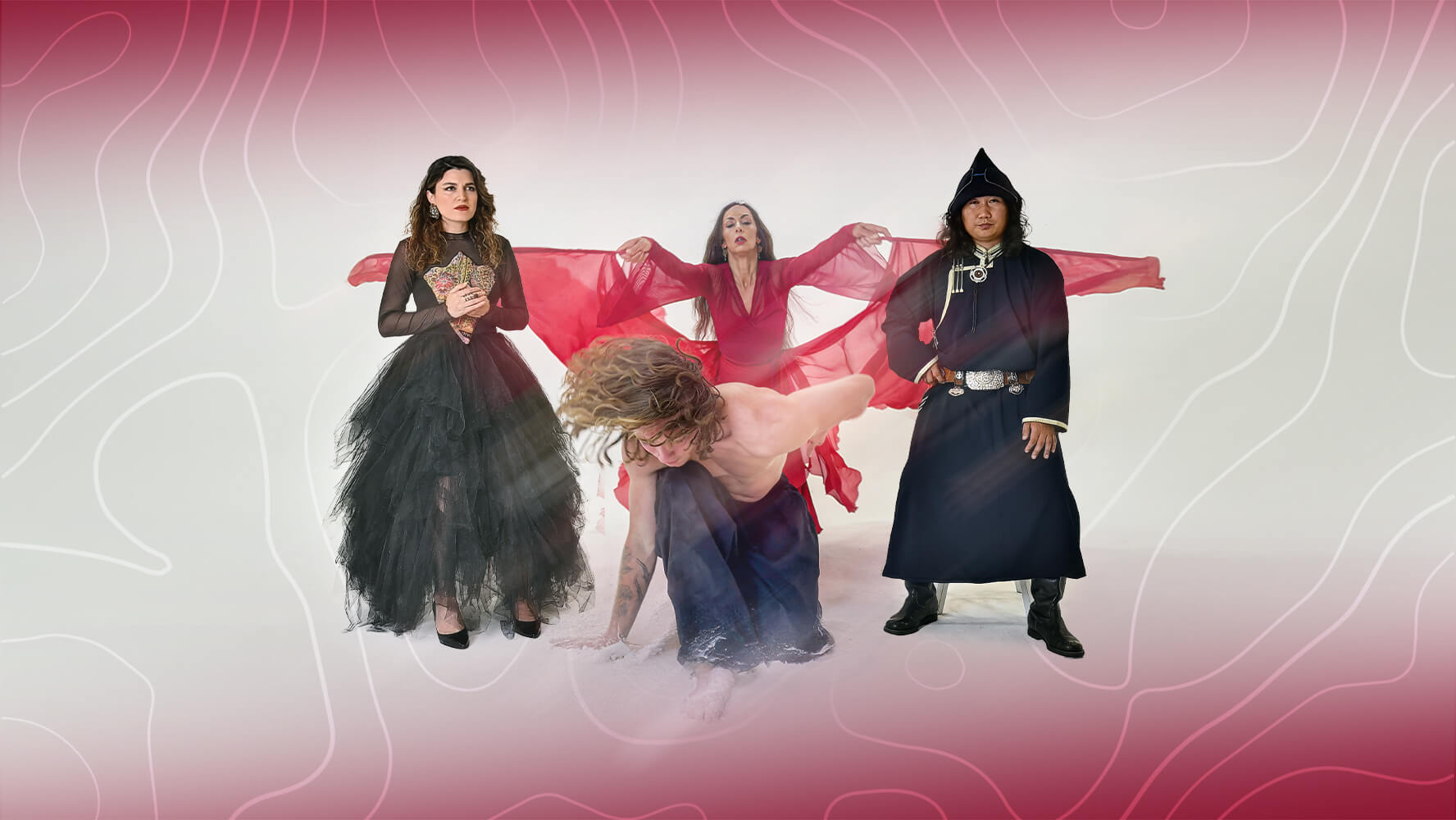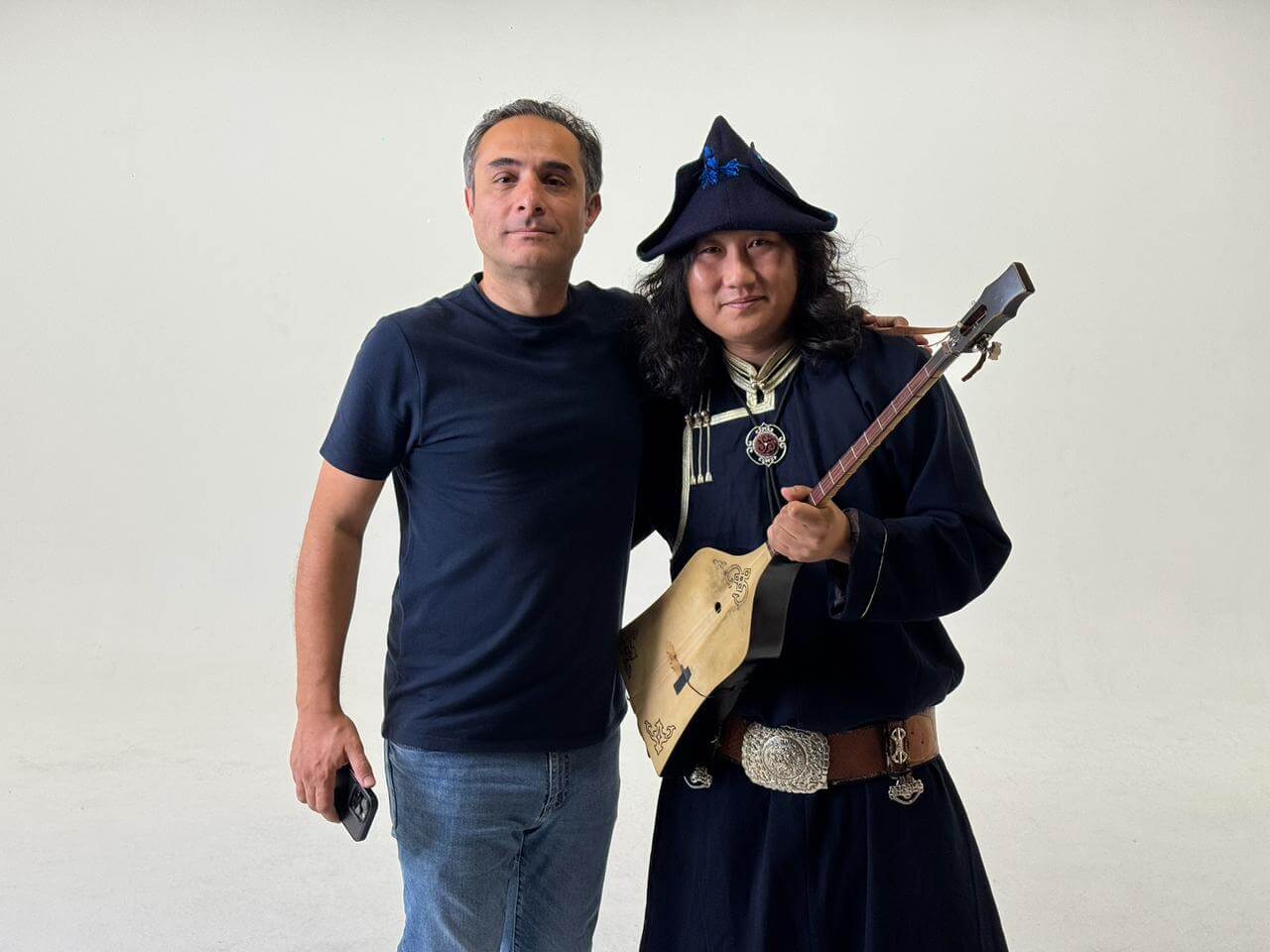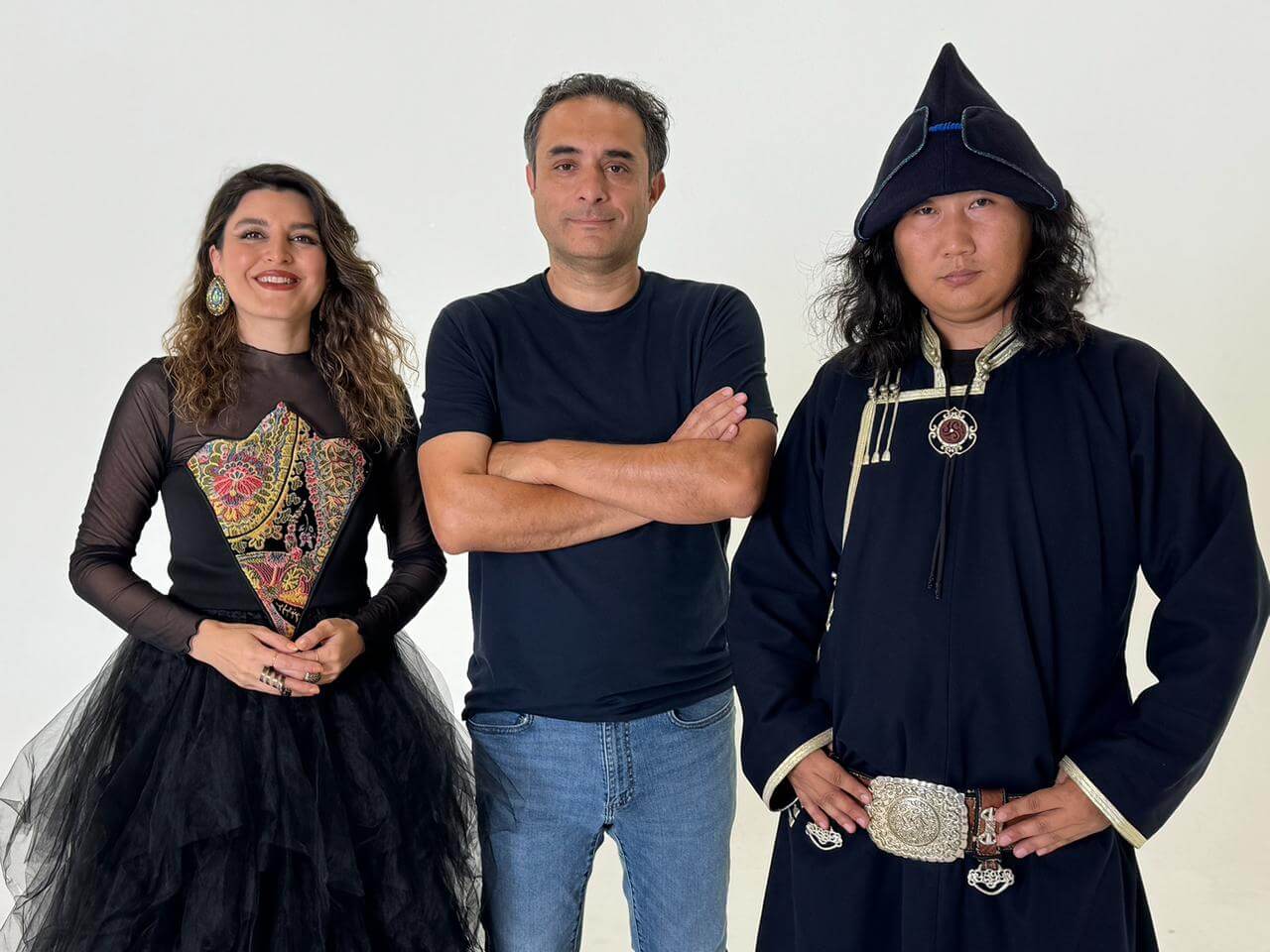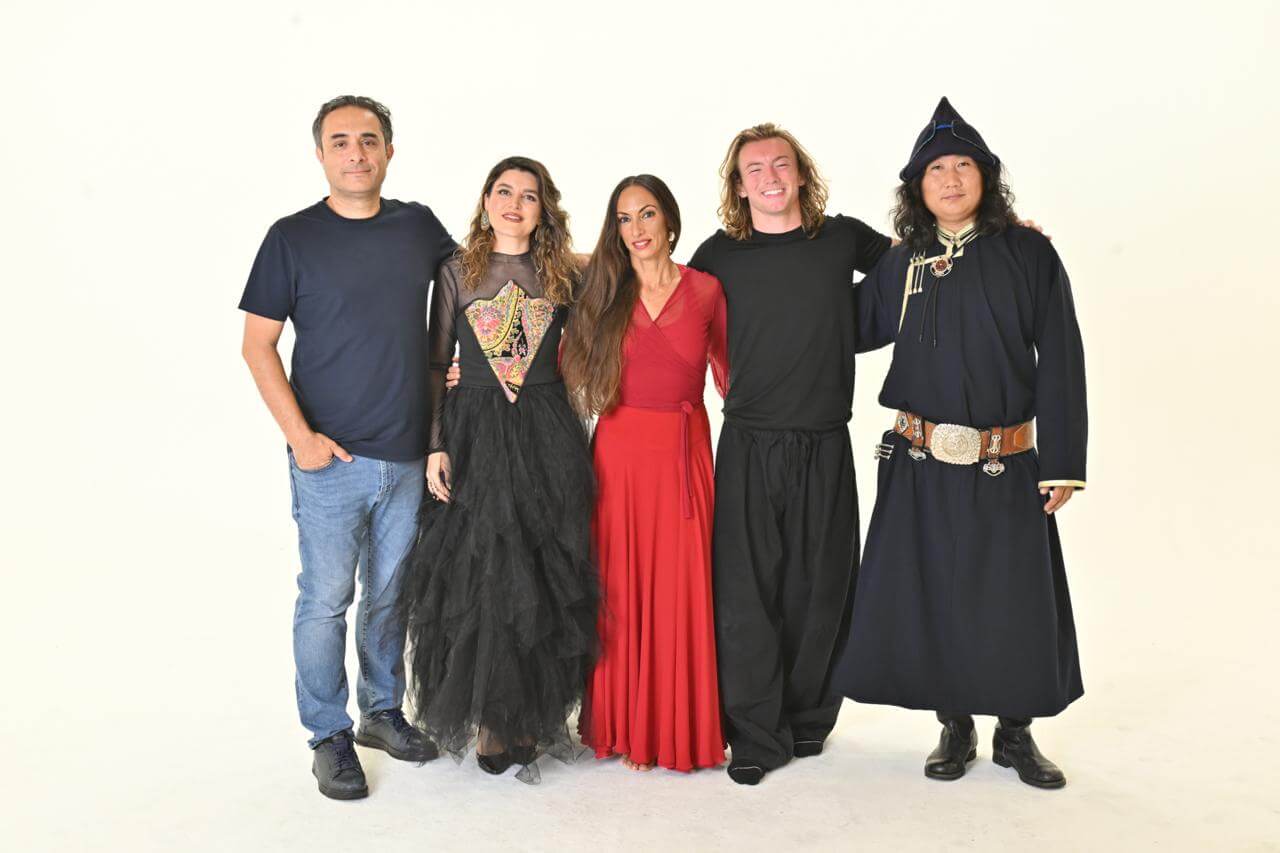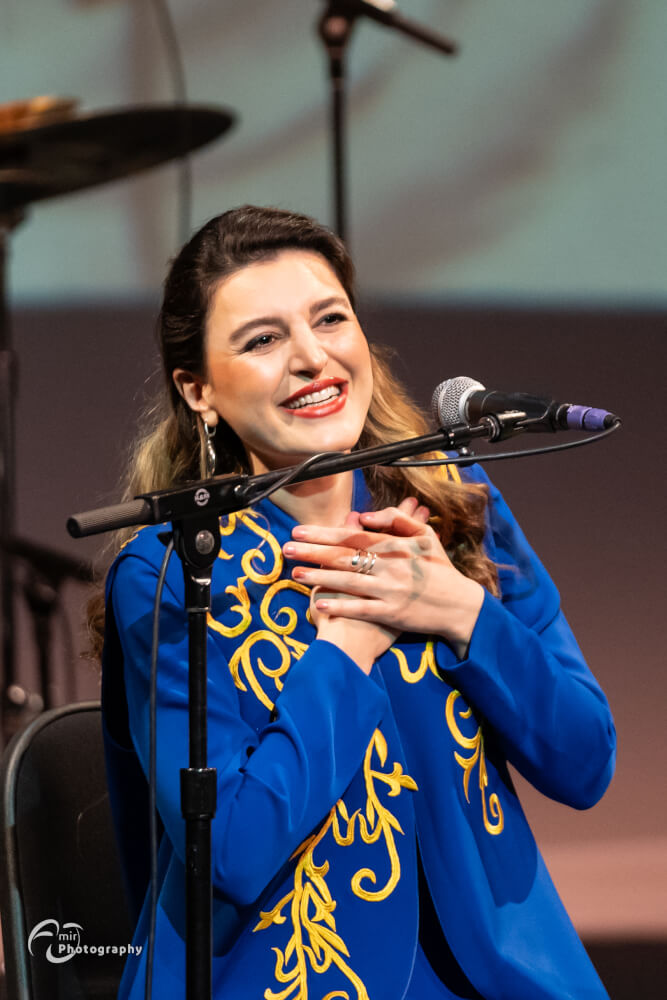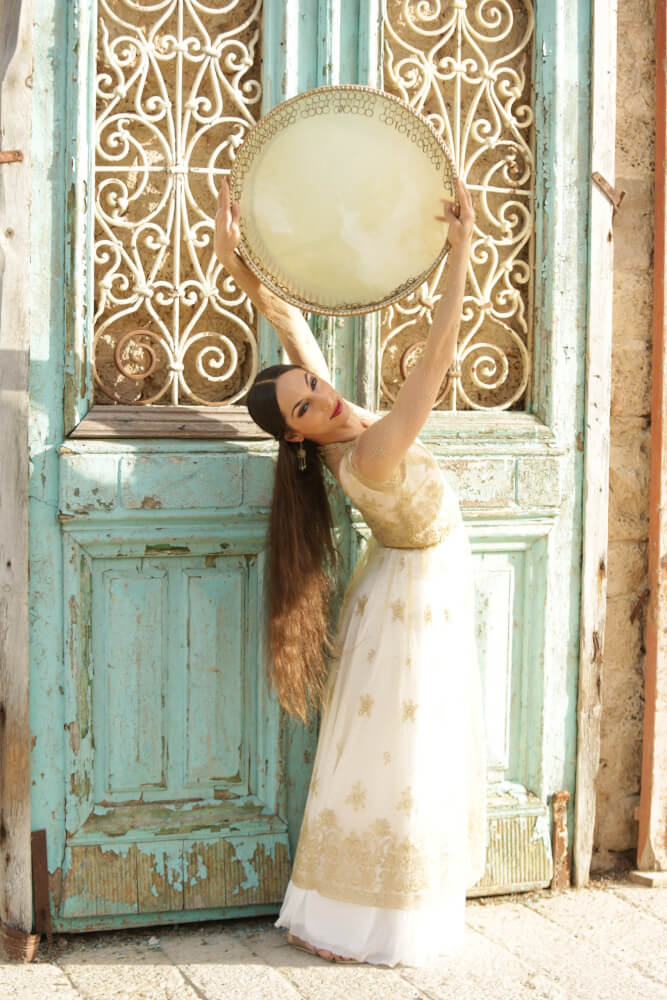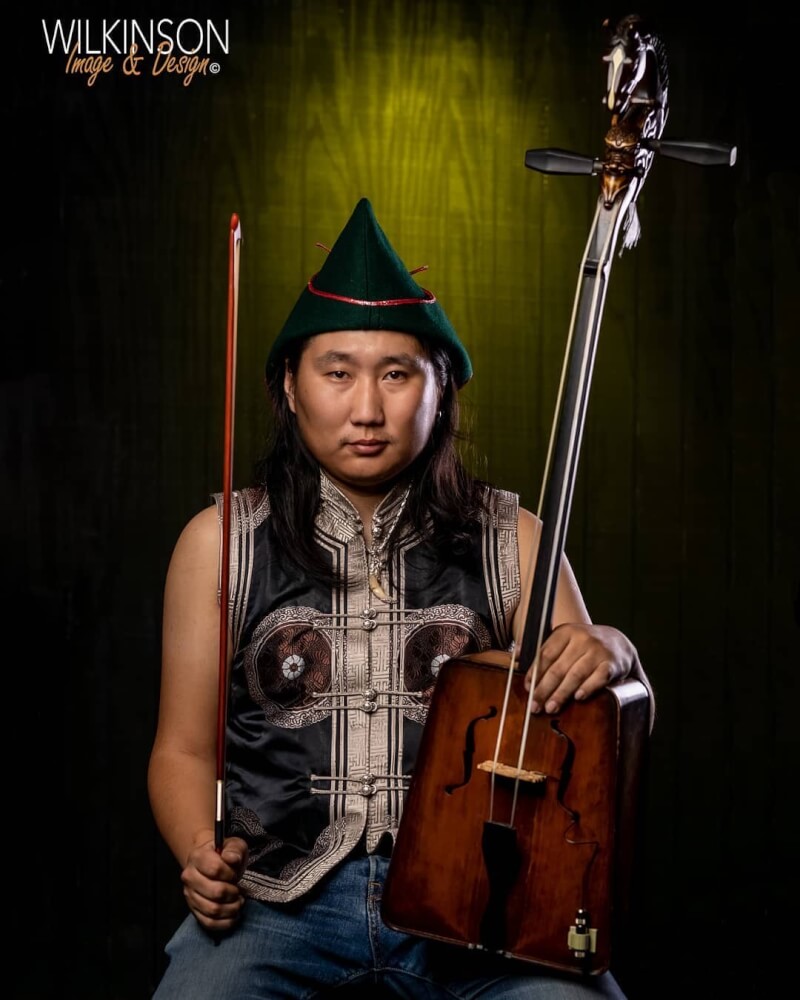An unprecedented fusion of Persian mysticism, Mongolian throat singing, and contemporary dance brings Rumi’s timeless poetry — and today’s migration stories — to life.
The Fountain of Eternity is a groundbreaking theatrical music performance created by composer and santoor virtuoso Ehsan Matoori. Inspired by the poetry of Rumi, the work explores migration, exile, and the search for belonging across five dramatic acts. It draws a parallel between Rumi’s forced departure from his homeland in the 13th century and the new waves of migration today
Each act reflects a different stage of Rumi’s journey, blending Persian mysticism, Mongolian throat singing, and contemporary world sounds into a new musical language. The album as a whole is both a retelling of Rumi’s story and a reflection on today’s universal struggles of displacement and migration.
Through music, narration, and movement, the production bridges ancient and modern worlds — carrying audiences from Rumi’s farewell in Balkh to the fires of Mongol invasions, to the contemporary struggles of displacement, and finally toward love, liberation, and transcendence.
The performance combines the haunting voice of Maliheh Moradi the otherworldly Mongolian throat singing of Tamir Hargana, and the whirling, mystical dance of Miriam Peretz. Matoori’s original score interweaves Persian santoor, world instruments, and contemporary soundscapes, creating a powerful dialogue between tradition and modernity.
“This work is not just about Rumi’s journey,” Matoori says, “it is about our journey today — the struggle of migration, the pain of displacement, and the hope that love is the force that endures.”
Act III — The Fountain of Eternity (Single & Music Video)
At the heart of the album lies its namesake piece, The Fountain of Eternity — a dramatic act where Rumi’s vision of the eternal struggle between light and shadow comes to life.
This piece is built on a translation of Rumi’s timeless poetry:
“Two forces dwell within the human heart —
one pulls toward the eternal light,
the other toward the fleeting shadow.
Only through love does the spirit endure.”
On stage, these forces are embodied through dance.
-
Miriam Peretz, as the Sufi dancer, symbolizes Good, Light, and Spirit — her whirling movement evoking ascension, purity, and the soul’s longing for the divine.
-
Carson Brooks, as the contemporary dancer, embodies the Bad, Shadow, and Ego — his angular, grounded movements expressing the turbulence of desire, fear, and human struggle.
The interplay between these two dancers creates a living metaphor for the inner conflict that defines both Rumi’s journey and our own: the battle between the spirit’s pull toward transcendence and the ego’s grip on the material world.
Musically, this act merges:
-
Maliheh Moradi’s soaring Persian vocals (voice of longing and love),
-
Tamir Hargana’s deep Mongolian throat singing (the voice of the earth and destiny),
-
and a rich composition and arrangement by Matoori that intertwines Persian and world instruments with contemporary textures.
The music video for The Fountain of Eternity will be released worldwide on September 10, 2025, offering the first glimpse into the album’s full vision.
Performer Bios
Ehsan Matoori is an Iranian-American composer, music producer, and master of the Persian santoor. He has composed and produced albums with celebrated Iranian artists Mohsen Namjoo and Alireza Ghorbani, establishing himself as a vital creative voice in contemporary Persian music. Matoori is also the creator of Voices Unveiled, an ongoing project dedicated to amplifying Iranian female singers silenced in their homeland; the project has been performed more than 40 times worldwide. In 2023, he was awarded the prestigious New Music USA Award for his contributions to cross-cultural composition and performance. His works blend Persian classical traditions with world music and contemporary soundscapes, exploring themes of migration, identity, and love.
Maliheh Moradi is an acclaimed Iranian vocalist known for her powerful and emotional interpretations of Persian classical and folk music. She began her musical journey with her father before training with masters such as Banoo Parisa and Mohammad Reza Shajarian, and has since performed with leading ensembles in Iran and abroad. Now based in the United States, she appears regularly on stages across the U.S., Canada, Europe, and Australia.
A featured artist in the international project Voices Unveiled, Moradi continues to bring Persian music to global audiences. Her latest release, Our Sorrow (ARC Music), created with composer Ehsan Matoori, fuses Persian poetry with contemporary world sounds, highlighting her voice in a modern and evocative context.
Tamir Hargana is an internationally recognized Mongolian throat singer and musician. A founding member of the renowned group Anda Union, he has toured globally, introducing audiences to the ancient art of khoomei (overtone singing). His deep, resonant voice evokes the spirit of the Mongolian steppes and the sacred traditions of his culture. In The Fountain of Eternity, his sound becomes a symbol of power, migration, and dialogue across civilizations.
Miriam Peretz is a dancer, choreographer, and teacher whose work draws from Persian, Central Asian, and Sufi traditions. With a background in both classical and contemporary dance, she is known for her whirling rituals that embody the ecstatic and meditative dimensions of movement. Peretz has performed and taught internationally, creating a unique style that blends spiritual practice with stage performance. In The Fountain of Eternity, her whirling dance becomes the visual embodiment of Rumi’s mystical journey.
Carson Brooks
Los Angeles–based contemporary dancer and choreographer whose work explores the intersections of modern technique, improvisation, and emotional storytelling. With performances spanning theater, film, and interdisciplinary collaborations, Brooks brings a fresh and visceral presence to the stage. In The Fountain of Eternity, his modern dance becomes a counterpoint to the traditional forms, embodying the turbulence and resilience of displacement in today’s world.
